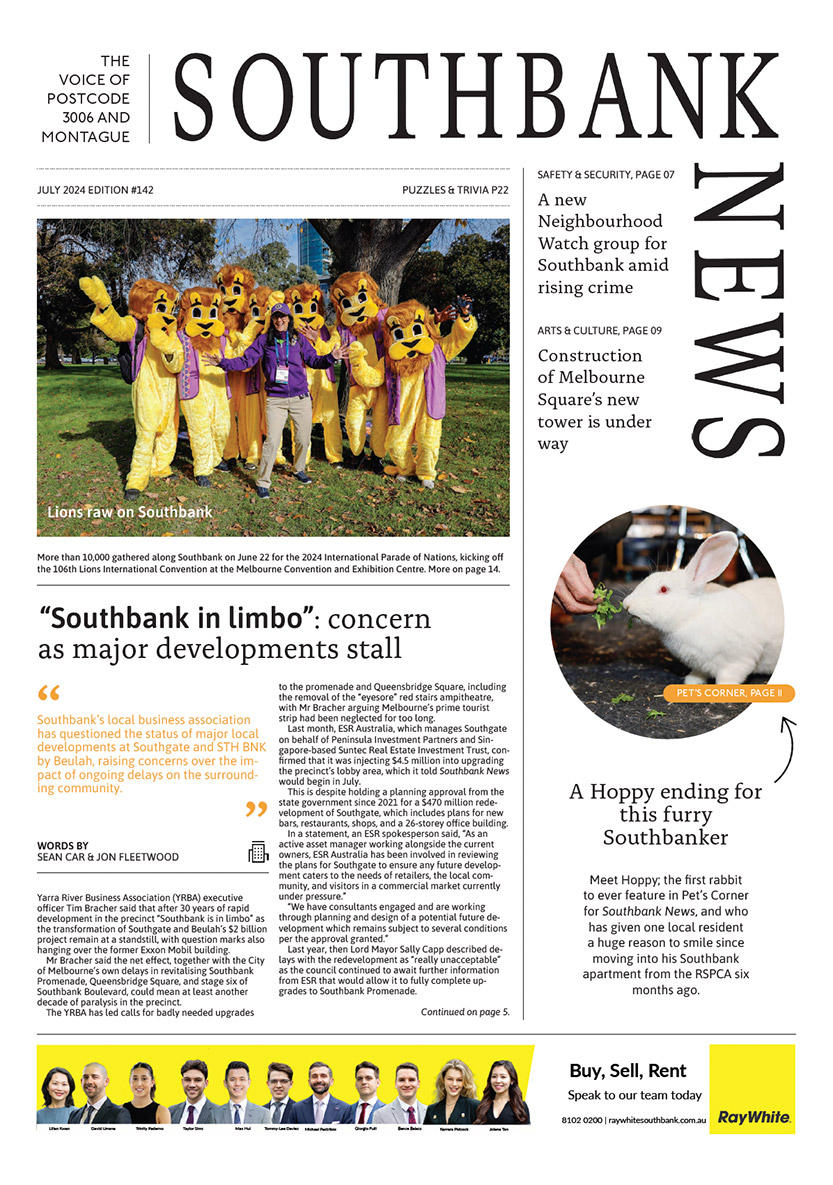Pedestrian numbers higher than pre-COVID as council makes renewed focus on office workers return
For the first time since the onset of COVID-19, monthly pedestrian traffic in the City of Melbourne has hit a higher level since before the pandemic.
Foot traffic, measured by sensors at various locations across the municipality, indicated that February 2023 edged slightly ahead (100.7 per cent) of February 2019 numbers.
According to Deputy Lord Mayor Nicholas Reece, this was a significant milestone.
“[It’s the] first time we have had a month that was higher than pre-pandemic,” he wrote on Twitter.
“It has been a hard road, but MELBOURNE IS BACK!!! Lots more still to do but this is a milestone to be proud of.”
Weekday numbers remain lower than before March 2020 (when Victoria was first subject to COVID restrictions) largely due to the shift to a “hybrid” working model where many workers spend less time in the office.
However, these lower numbers were being bolstered by very strong night-time and weekend visitor levels, which continued to rise.
A new report released by the City of Melbourne in March confirmed this and painted a more optimistic view compared to many similar reports released throughout extended lockdown periods in 2020 and 2021.
“Melbourne’s visitor economy has recovered strongly. Overall spending on both weekdays and weekends is now higher than before the pandemic, even after adjusting for inflation,” it read.
Night-time spending is up markedly and spending in December was the highest on record. Pedestrian numbers at night-time and on Saturdays are meeting or exceeding pre-pandemic levels.
Melbourne’s student population was similarly “rebounding strongly” according to the latest report, with the number of international students studying in Victoria back to 83 per cent of pre-COVID levels.
“We send out an especially warm welcome to international students – 104,000 of which have chosen Victoria for their studies,” Lord Mayor Sally Capp said during O-Week celebrations.
“Our pedestrian sensors have noted a huge uptick in activity in these University sectors of the city, with footfall as high as 84 per cent on Thursday.”
Perhaps unsurprisingly, the area the council was most looking to bolster was weekday office workers, a cohort it said was lagging behind and — as they have reiterated many times despite the likely permanent shift to hybrid working — crucial to the economic recovery of the city.
While office occupancy was trending upward, morning commuter levels were still just 63 per cent of the pre-pandemic benchmark.
“It’s clear that the presence of more office workers is associated with a stronger knowledge economy. The central city will benefit if office workers can be persuaded that their commute to the office is worthwhile.”
To entice higher levels of workers it has prioritised a number of measures, including greater marketing and publicity regarding social and leisure activities post-work, and even bespoke content for major city-based companies.
“While Melbourne’s positioning within the visitor market is relatively robust, there is potential to strengthen the city’s positioning as a vibrant place of business and innovation.”
Officers recommended that the council “intervenes as far as possible” to strengthen the city’s economy in the medium-term, by:
- Helping attract investment and help support small businesses;
- Connect and support start-ups;
- Develop an innovation precincts in Fishermans Bend, City North and Arden; and
- Work with the property sector to enhance the attractiveness of office space.
Councillors were expected to endorse officers’ recommendations at the March 7 Future Melbourne Committee meeting.
Image credit: Duale Siad

A new Neighbourhood Watch group for Southbank







 Download the Latest Edition
Download the Latest Edition